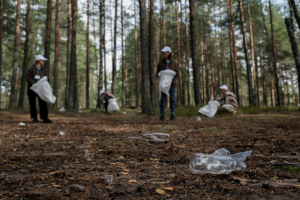On Saturday, September 16th, World Cleanup Day will unite volunteers, governments and organizations in 197 countries and territories to tackle the universal mismanaged waste crisis and to help create a new, more sustainable world. A powerful “green wave” spanning across the globe will harness the power of millions of people taking positive action on the same day, bringing together the global community to raise awareness and implement true change to achieve a one shared goal – a clean and healthy planet.
Wherever you are in the world, the actions you take for World Cleanup Day in your local community can have a huge impact. Grab a pair of gloves, a few trash bags and organize a cleanup event yourself if there are none close by. If you opt to go this route, invite family and friends to participate and register it as an event here, as every single person’s contribution to the activity counts toward the global total.
Area residents inspired by World Cleanup Day are encouraged to further make a commitment to practice simple, waste-reducing habits moving forward in all aspects of daily life that are aimed at bettering our environment and the quality of the air we breathe. With that in mind, here are some helpful tips to consider for incorporating green into your day-to-day routine:
- Nix Bottled Water – Did you know that up to 80% of single-use water bottles in the U.S. never get recycled? Not only does the production of plastic water bottles contribute significant amounts of greenhouse gases to the atmosphere, but their litter lingers for years on end. Consider buying a reusable water bottle to take with you on the go and refill as needed to cut down on unnecessary waste and help improve air quality.
- Reduce Waste/Conserve Energy at Home – Swapping out incandescent light bulbs with LEDs, putting timers on lights and investing in smart power strips can help to avoid excessive electricity use. While reducing and reusing are the most effective ways to save money and natural resources, recycling is another vital piece of greening your home by helping to keep waste out of landfills and turning glass, paper, plastic and other items into new materials. Also, consider setting up recycling bins in your home and purchasing recycled products to help clean the air.
- Go Paperless When Possible – There are many places where you can opt out of paper, whether that be credit card bills, receipts or even your favorite household cleaning products. Paper towels, for example, may be useful and convenient but collectively contribute to deforestation and an ever-increasing waste problem. Signing up for online banking, opting for email versions of receipts, printing on both sides of a sheet or using the back side of old documents for scrap paper are other resourceful ways to reduce paper waste.
For more great tips on how to achieve cleaner air year-round, visit the Clean Air Partnership’s website, like us on Facebook or follow us on Twitter at @gatewaycleanair.







